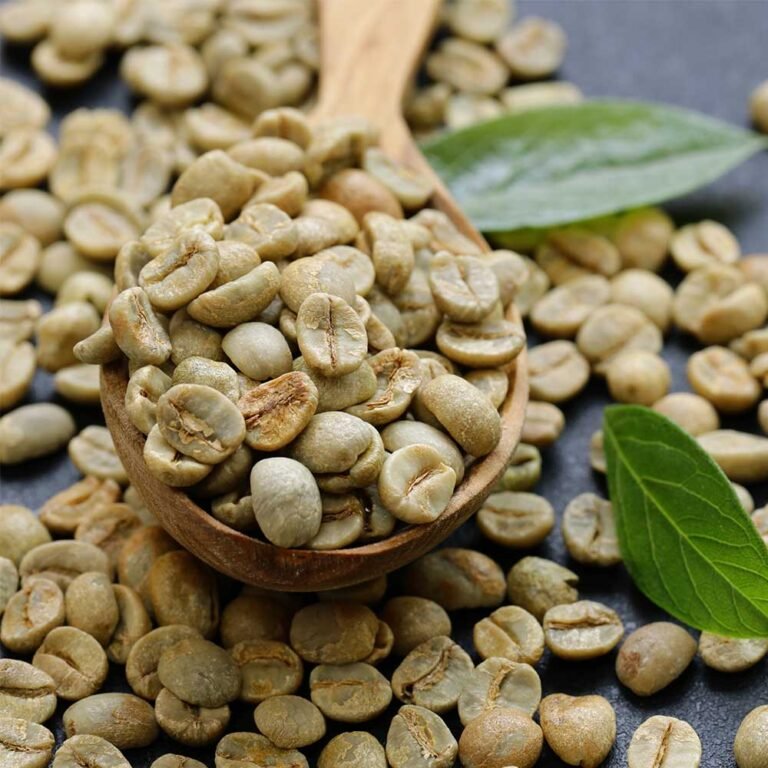The Art of Cappuccino: Exploring the Best Cappuccino Recipes
There’s something about a perfectly crafted cappuccino that can turn an ordinary morning into a delightful experience. The combination of rich espresso, velvety steamed milk, and a touch of froth creates a symphony of flavors and textures that coffee lovers around the world adore. In this blog post, we’ll explore the art of making the best cappuccinos and share some delicious recipes for you to try at home.
Creating the perfect cappuccino is an art form that requires attention to detail and a deep understanding of the ingredients and techniques involved. It starts with the espresso, which forms the base of the cappuccino. The quality of the espresso is crucial, as it sets the foundation for the entire drink. A well-balanced and flavorful espresso will provide a robust and complex flavor profile to the cappuccino.
Next comes the steamed milk, which adds a creamy and smooth texture to the cappuccino. Achieving the right consistency and temperature is key. The milk should be heated to around 150°F (65°C) and frothed to create a velvety microfoam. This process requires practice and patience, as it can be challenging to achieve the perfect balance between steamed milk and froth.
Once the espresso and steamed milk are ready, it’s time to assemble the cappuccino. Start by pouring the espresso into a preheated cup, filling it about one-third to half full. Then, slowly pour the steamed milk over the espresso, allowing it to mix and create beautiful layers of flavor. The final touch is adding a dollop of froth on top, which not only enhances the visual appeal but also adds a delightful creamy texture to each sip.
Now that we’ve covered the basics of making a cappuccino, let’s dive into some exciting recipes to elevate your cappuccino game. One popular variation is the flavored cappuccino, where you can add syrups such as vanilla, caramel, or hazelnut to enhance the taste. These flavored cappuccinos are perfect for those who enjoy a hint of sweetness in their coffee.
If you’re feeling adventurous, you can also experiment with different types of milk to create unique cappuccino variations. For example, using almond milk or oat milk can add a nutty and slightly sweet flavor to the cappuccino. Additionally, you can try incorporating spices like cinnamon or cocoa powder to infuse your cappuccino with a warm and aromatic twist.
As you continue to explore the art of cappuccino-making, don’t forget to pay attention to the presentation. A well-crafted cappuccino is not only a treat for the taste buds but also a feast for the eyes. Consider dusting some cocoa powder or cinnamon on top of the froth, or even creating latte art with a simple design or pattern.
Whether you’re a coffee connoisseur or just starting your journey into the world of cappuccinos, experimenting with different recipes and techniques is part of the fun. So grab your favorite mug, gather your ingredients, and get ready to create your own masterpiece. With a little practice and a lot of passion, you’ll soon be enjoying the best cappuccinos right in the comfort of your own home.
What Makes a Great Cappuccino?
Before we dive into the recipes, let’s take a moment to understand what sets a great cappuccino apart from the rest. A perfect cappuccino is all about balance. It should have equal parts espresso, steamed milk, and foam. The espresso provides a strong and robust flavor, while the steamed milk adds a creamy and smooth texture. The foam, which is created by aerating the milk, adds a light and airy element to the drink.
Additionally, the temperature of a cappuccino is crucial. It should be served hot, but not scalding. The ideal temperature is around 150°F (65°C). This allows the flavors to meld together harmoniously, creating a truly enjoyable drinking experience.
Another key factor that contributes to a great cappuccino is the quality of the ingredients. Starting with freshly roasted and ground coffee beans is essential for achieving a rich and flavorful espresso. The milk used should be fresh and preferably whole milk, as it creates a creamier texture and enhances the taste. Using low-fat or skim milk may result in a thinner and less satisfying cappuccino.
The skill and technique of the barista also play a significant role in the outcome of a cappuccino. Properly extracting the espresso, steaming the milk to the right consistency, and creating velvety microfoam are all essential steps that require practice and precision. A skilled barista knows how to achieve the perfect balance between the three components, creating a visually appealing and delicious cappuccino.
Furthermore, the presentation of a cappuccino can elevate the overall experience. A great cappuccino is often served in a ceramic cup, which helps to retain the heat and enhances the aroma. The foam should be poured in a way that creates beautiful latte art, adding an artistic touch to the drink. The attention to detail in the presentation not only enhances the visual appeal but also showcases the care and craftsmanship that went into making the cappuccino.
In conclusion, a great cappuccino is the result of a delicate balance between espresso, steamed milk, and foam. It requires high-quality ingredients, precise technique, and attention to detail. When all these elements come together, it creates a cappuccino that is not only pleasing to the taste buds but also a feast for the eyes. So, the next time you indulge in a cappuccino, take a moment to appreciate the craftsmanship and enjoy every sip of this exquisite beverage.
Flavored Cappuccino Recipes
If you’re looking to add some excitement to your cappuccino, why not try a flavored variation? Here are two delicious recipes to tantalize your taste buds:
Vanilla Cappuccino
This recipe adds a hint of sweet vanilla to the classic cappuccino. Here’s what you’ll need:
- 1 shot of espresso
- 1/2 cup of whole milk
- 1 tablespoon of vanilla syrup
- Whipped cream for topping (optional)
Follow these steps to create your vanilla cappuccino:
- Brew a shot of espresso and set it aside.
- In a small saucepan, heat the milk over medium heat until it starts to steam.
- Stir in the vanilla syrup until well combined.
- Froth the milk until it becomes creamy and velvety.
- Pour the espresso into a cappuccino cup or a mug.
- Gently pour the frothed milk over the espresso, holding back the foam with a spoon.
- Spoon the foam on top of the milk.
- If desired, top with whipped cream and a sprinkle of cocoa powder.
- Serve and savor the delightful vanilla flavor!
Vanilla cappuccino is a popular choice among coffee enthusiasts who enjoy a touch of sweetness in their cup. The combination of the rich espresso and the creamy vanilla-infused milk creates a harmonious balance of flavors. The vanilla syrup adds a subtle sweetness that complements the boldness of the coffee without overpowering it. The frothed milk adds a velvety texture to the drink, making each sip a luxurious experience. Topping the cappuccino with whipped cream and a sprinkle of cocoa powder adds an extra indulgent touch, perfect for those looking to treat themselves to a special coffee moment.
Hazelnut Cappuccino
If you’re a fan of nutty flavors, this hazelnut cappuccino recipe is perfect for you. Here’s what you’ll need:
- 1 shot of espresso
- 1/2 cup of whole milk
- 1 tablespoon of hazelnut syrup
- Chopped hazelnuts for garnish (optional)
Follow these steps to create your hazelnut cappuccino:
- Brew a shot of espresso and set it aside.
- In a small saucepan, heat the milk over medium heat until it starts to steam.
- Stir in the hazelnut syrup until well combined.
- Froth the milk until it becomes creamy and velvety.
- Pour the espresso into a cappuccino cup or a mug.
- Gently pour the frothed milk over the espresso, holding back the foam with a spoon.
- Spoon the foam on top of the milk.
- If desired, garnish with chopped hazelnuts for an extra crunch.
- Serve and enjoy the delightful hazelnut aroma!
Hazelnut cappuccino is a delightful choice for those who appreciate the rich and nutty flavors. The combination of the espresso and the hazelnut syrup creates a harmonious blend that is both comforting and indulgent. The hazelnut syrup adds a distinct nutty sweetness that pairs perfectly with the robustness of the coffee. Frothing the milk to a creamy consistency enhances the overall texture of the drink, making it velvety and smooth. For an added crunch, garnishing the cappuccino with chopped hazelnuts adds a delightful surprise with each sip. Whether you’re starting your day or taking a break, a hazelnut cappuccino is sure to satisfy your taste buds and awaken your senses.
Alternative Milk Options
For those who are lactose intolerant or prefer non-dairy options, there are plenty of alternatives to whole milk that can be used in cappuccinos. Here are a few popular choices:
Almond Milk
Almond milk is a creamy and nutty alternative that pairs well with the strong flavors of espresso. It creates a slightly sweeter cappuccino with a hint of almond flavor. Make sure to choose unsweetened almond milk to maintain the balance of flavors.
Soy Milk
Soy milk is a popular choice for those who are lactose intolerant or follow a vegan diet. It has a creamy texture and a slightly sweet taste. Soy milk froths well, creating a velvety foam that complements the espresso perfectly.
Oat Milk
Oat milk is a rising star in the non-dairy milk world. It has a naturally sweet and creamy flavor that adds a unique twist to cappuccinos. Oat milk froths well, creating a rich and velvety foam.
In addition to these popular alternatives, there are several other milk options that can be used in cappuccinos. One such option is coconut milk, which has a rich and tropical flavor that can enhance the taste of the espresso. Coconut milk froths well and creates a thick foam that adds a luxurious texture to the cappuccino.
Another alternative is rice milk, which has a mild and slightly sweet taste. Rice milk is thinner in consistency compared to other milk alternatives, but it can still be frothed to create a light foam. It is a good option for those who prefer a lighter cappuccino.
For those who are looking for a more indulgent cappuccino experience, there are also options like cashew milk and hazelnut milk. Cashew milk has a creamy and buttery flavor that adds richness to the cappuccino, while hazelnut milk has a distinct nutty taste that pairs well with the espresso.
With so many alternative milk options available, it is easier than ever to customize your cappuccino to suit your taste preferences and dietary needs. Whether you prefer a nutty almond milk cappuccino or a creamy coconut milk cappuccino, there is a non-dairy option out there for you.








